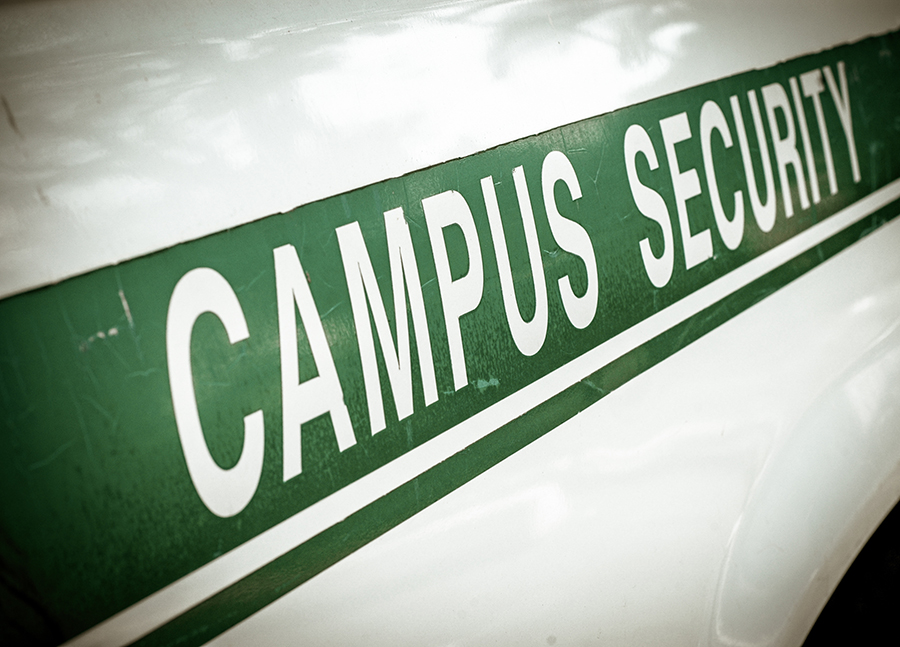Optimizing University Dorm Security Ahead of Move-In Day

A Secure Start to the Semester
Each new semester brings with it new tensions and concerns. While it’s the job of the students to select their classes and social activities; maintain good grades and friendships; and acquaint themselves with new roommates and dorm rooms, the university law enforcement is consumed with ensuring that campus residents can do all the above safely. The dormitory move-in period is a particularly sensitive time, when security has to be on high alert to prevent events, such as theft and violent clashes. There are many ways campus security can proactively prepare for and prevent security incidents – we’ll discuss a few in this post:
1. Conducting a Security Audit
A great starting point, per the recommendation of Campus Security Magazine, is to conduct a thorough security assessment to identify typical threats to campus property and university residents. Having a comprehensive understanding of the security challenges to be expected, security personnel can strategize preventative and responsive measures to reduce risks.
Reviewing the security reports from move-in days past, campus law enforcement can prepare for the situations likely to unfold, as well as for unexpected events.
2. Enlisting Staff & Resident Cooperation
Without the cooperation of the visitors, staff, and residents, it will be difficult for campus law enforcement to maintain calm and security in the dorms all year long. It is critical for security to reach out to residents new and old on day one and engage them to support security protocols. While dorm security should communicate how residents can help keep the dorm environment safe and the tools at their disposal in emergency situations, such as security alarm systems, sophisticated keys and door locking systems, 24-hour, live security staff within response range, video surveillance monitoring and more.
3. Optimizing Access Control
Arguably, one of the most serious risks to dorm security is that of unauthorized persons entering dorm buildings: To ensure optimal security, only staff, residents, and other recognized individuals should ever be granted access to any dormitory. Throughout the semester or dorming period, solutions such as access control tools, entry-point key and lock systems and sophisticated video surveillance-based video content analytics can all be woven into a comprehensive security network. While these protocols are difficult to enforce on move-in day, it’s a good standard to set in motion as early as possible.
Universities may consider using face recognition technology to monitor visitors and identify new people entering the building. Resident security can pre-compile a watchlist of dorm residents and approved staff and configure face recognition alerting to trigger notifications whenever an unrecognized individual enters the building. Upon receiving this alert, the video surveillance operator can assess the situation, in real-time, to determine whether action or closer monitoring is necessary to maintain dorm safety.
4. Extracting & Tracking Video Objects
With so many moving people and objects flowing in and out of buildings on move-in days, it’s not uncommon for items to go missing – sometimes dormitories are even targeted for theft during these high traffic and hectic times. Campus law enforcement can proactively prepare to investigate these types of incidents with video content analysis software. Video content analytics, driven by artificial intelligence and Deep Learning technologies, enable operators to process video data, identify the objects that appear and extract them from the video, classify them and catalog them as searchable metadata. In so doing, the technology solution empowers law enforcement to quickly review and search video and to filter video to find specific objects of interest.
For instance, if a backpack goes missing, a quick video search can help security personnel pinpoint all appearances of backpacks in video across multiple surveillance cameras and hours of recording. This can be used for understanding why the backpack went missing, locating the missing object and, when necessary, mobilizing personnel to recover the backpack and apprehend whoever took the backpack, when theft is suspected.
5. Identifying Potential Bottlenecks
Crowding and congestion in narrow hallways is a common occurrence on move-in day, but it’s also a common harbinger of clashes. Campus security needs ways of proactively preventing bottlenecks in hallways and video content analysis can be leveraged for this, as well.
With video analytics alerting capabilities, campus security can be notified when specified behaviors are detected on camera. Count-based alerts enable law enforcement to configure rules and trigger alerts for a predefined time period when a specified number of objects or a concurrent number of objects are detected. Upon receiving a notification, security can intervene in real-time, before crowding turns into a cause for commotion.
6. Driving Dorm Counselor Engagement
In addition to the security personnel, Resident Assistants (RAs) and Dorm Counselors can be instrumental in facilitating a safe and streamlined move-in day. Using video content analysis and facial recognition software, campus security can support RAs and help them better serve students by compiling a watchlist of resident assistants and configuring alerting for any time a certain number of recognized RAs are detected within a defined proximity. This can help ensure that counselors are distributed throughout the building on move-in day and not congregating close to one another. By helping direct the RAs to be present and fully engaged with the new campus residents, security can help optimize the move-in process.
Student safety is the primary concern of every higher education establishment – without it, proper learning can be difficult or impossible. When students and parents understand the care and seriousness with which your university approaches security and safety, your educational institution will stand out. Modern AI and analytic tools are becoming increasingly enmeshed in the Campus Security toolbox, providing more critical information, delivering timely intelligence to key personnel and setting the stage for a productive semester for campus life in the dorms and beyond.
Signup to receive a monthly blog digest.